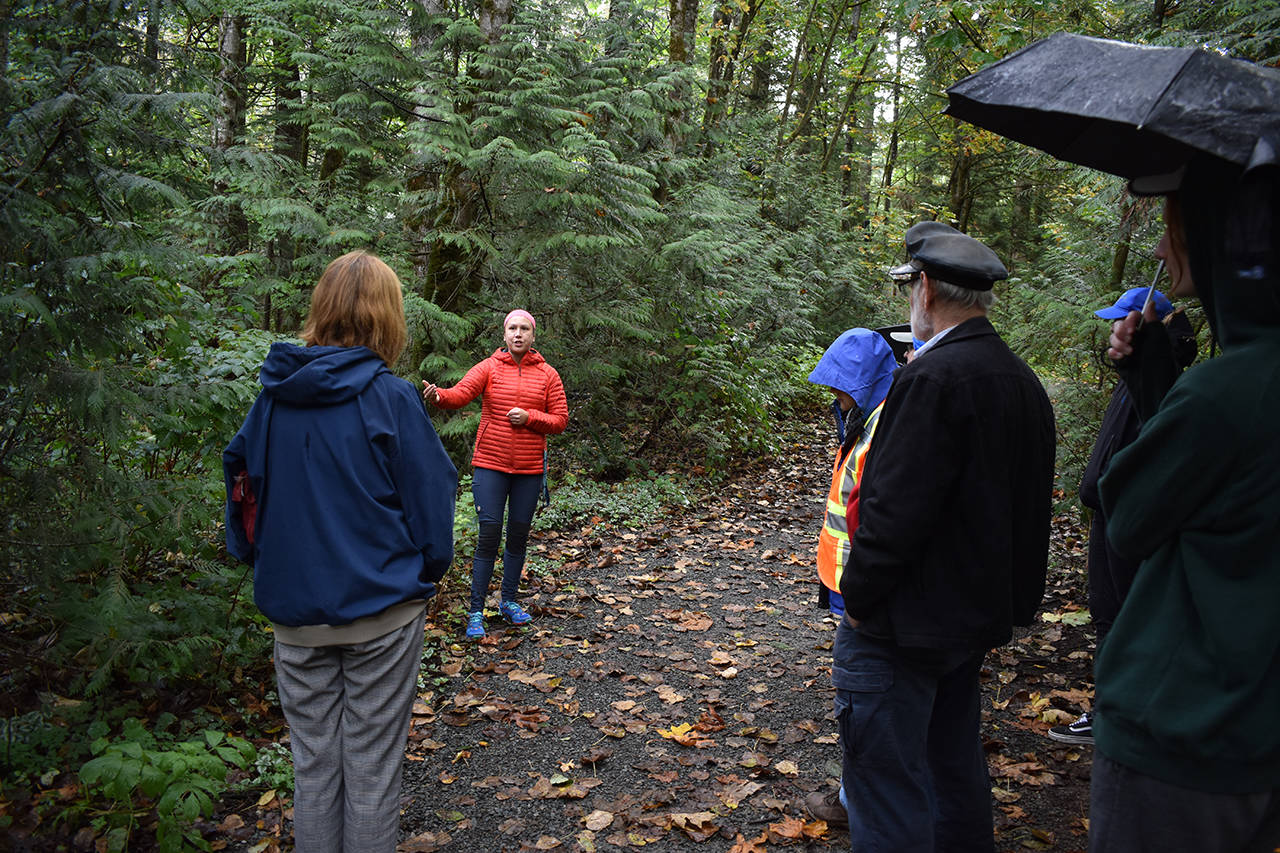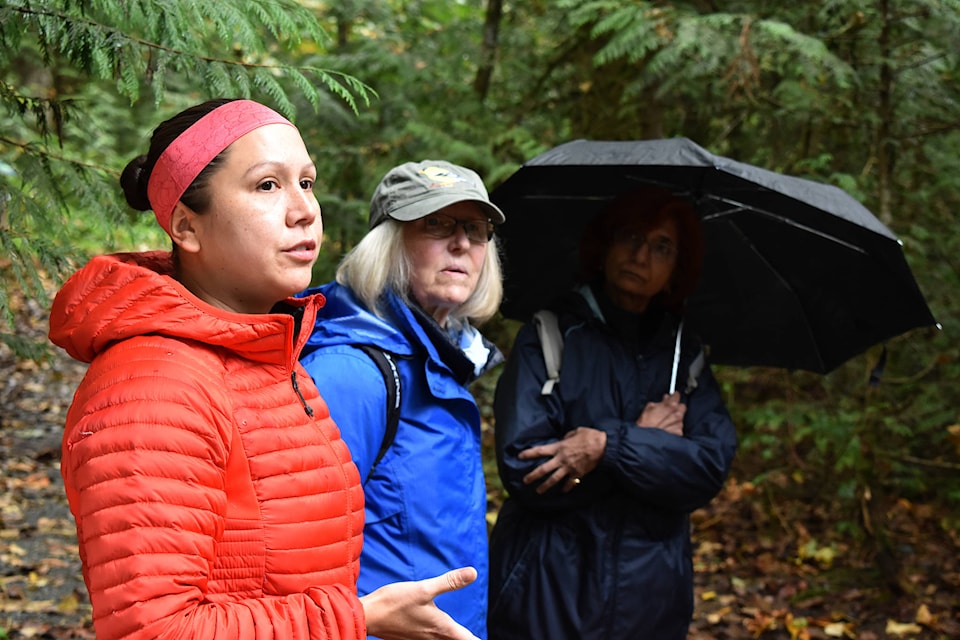Around half a dozen people braved the rain and even some hail on Friday (Sept. 27) to learn a little about the plants in Harrison’s East Sector Lands.
“We can sit in a room, in a classroom and talk about things, but it’s those moments when we’re experiencing something that really triggers the types of learning that stick with us,” speaker Carrielynn Victor said, standing underneath a Red Cedar tree at the Spirit Loop trailhead.
“I’m a firm believer that the things that we remember are the things that are meant for us.”
Victor, a member of the Cheam First Nation and a local plant practitioner, was speaking as part of the Plant Walk and Talk, which saw participants walk through the East Sector Lands with Victor as a guide, as a way to help introduce people to the area’s rich natural history.
RELATED: Métis elder shares medicinal uses of plants in Chilliwack
“When I speak about plants, I speak about them as ancient ancestors,” Victor said. “That’s how I was taught, and that’s how the origins of the plants have been carried through the generations, through story.”
This was especially at the beginning of the walk, where Victor introduced the tour to x̱pá:yelhp — the Red Cedar. She told the story of how the Red Cedar first came to be, when a very generous man began to age and wanted to ensure his generosity would continue after his death.
“He said, ‘I want to always give. I don’t want to die and for that generosity to die with me,’” Victor said, adding that the Creator saw him praying for this, and told him to be buried beneath the ground when he passed. Traditionally, the deceased would have been wrapped in blankets and placed in boxes high in the trees.
“Where they buried him, the very first tree grew,” Victor said. “He had told the people the instructions … to use the bark, to use the bough, to use the wood, to use the roots.
“It’s just endless,” she continued. “People write books on all the things that are useful. And what I’ve found in this modern life that we’re living is how necessary it is to maintain those connections.”
RELATED: Wild and traditional foods of the Sto:lo
The walk also included more practical tips about local plant life, including how to identify which salmon are in the river based on the salmon berry’s colour and where the best new shoots are on the plant.
The Plant Walk and Talk was organized by WildSafeBC as part of it’s BC Goes Wild campaign, which aims to raise awareness about human and bear interactions in the fall. The walk was accompanied by a bear spray demonstration, to give participants a better understanding of how to use bear spray safely.
“September especially is a time of year where human-bear conflict tends to spike,” Erin Patrick, community coordinator for the Fraser Valley Regional District, explained. “So because they are looking for food at this time of year, we’re more likely to have conflict.”
The goal of the events, which have taken place across B.C. for the last four years, is to help educate the public on how to safely interact with bears and other wildlife, particularly by getting rid of attractants like garbage and unpicked fruit.
So far this year, the Fraser Valley area has seen an unprecedented number of calls related to bears, causing the BC Conservation Officer Service to crackdown on attractants with “audits” throughout the region.
RELATED: Fraser Valley sees 50 calls for bear conflicts in September
grace.kennedy@ahobserver.com
Like us on Facebook and follow us on Twitter

